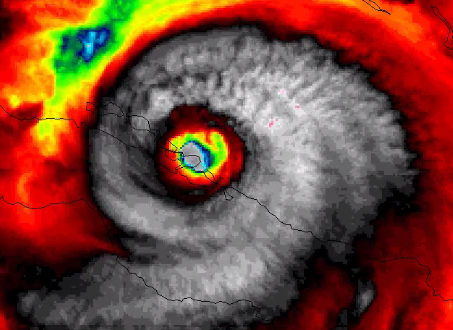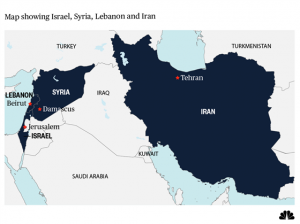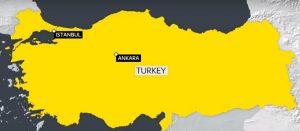
Sky News, Tuesday 19 September 2017: ‘How Hurricanes Are Named – And How They Are Categorised’
Hurricane Maria is becoming a “major” hurricane and heading fast towards the Leeward Islands. It follows days behind Hurricane Irma, which devastated parts of the Caribbean and Florida.
Last month, Hurricane Harvey dumped huge amounts of rain on Houston in Texas.
But what are hurricanes? How do they form? How do they get their names? And why are some much more destructive than others? We answer your hurricane questions below.
What is a hurricane?
A hurricane is a tropical cyclone. These are large, swirling storms which have violent winds, intense rains and are usually accompanied by a large “wall of water” known as a storm surge.
How do they form?
Several factors are needed for a tropical cyclone to form.
A warm ocean is necessary. So is a pre-existing weather disturbance, moisture and light winds.
Despite all this scientists do not know precisely why some become hurricanes and others don’t. The strongest storms are often “Cape Verde” style hurricanes. They are named because they form from tropical disturbances near the Cape Verde Islands – off the west coast of Africa.
How are they measured?
The strength of Atlantic hurricanes is measured using the Saffir-Simpson Hurricane Wind Scale (SSHWS).
This places hurricanes in five categories – one to five – depending on the sustained intensity of the wind.
The scale does not measure how much rain a hurricane brings or the level of the storm surge – even though these can sometimes be even more destructive than the wind.
What are the categories and what do they mean?
The US National Hurricane Centre has different description for tropical storms and each of the five categories of hurricane.
When do they occur?
The official Atlantic “hurricane season” runs from 1 June to 30 November – this is when the vast bulk of the storms hit.
However, they can occur at any time and tropical storms have been recorded in every month of the year, including the middle of winter.
Where do Atlantic hurricanes hit?
They can hit pretty much anywhere, but hurricanes require warmer waters. Because of this, most tend to affect the Caribbean, central America and southern and eastern parts of the US.
Hurricanes have also hit New England, Canada, Portugal, the Azores, Spain and South America.
It is claimed – but disputed – that Hurricane Debbie was still a “tropical storm” when it hit Ireland in September 1961. Many hurricanes and tropical storms stay harmlessly out at sea and never threaten land.
How are they named?
Tropical storms in the Atlantic are named alphabetically – with the first storm of each year starting with the letter A.
Male names and female names are alternated and are reused every six years. The names of deadly storms are retired and not used again.
Andrew, Katrina, Ivan and Mitch are among the retired names. From this year, Harvey and Irma will be retired.
What is the difference between a hurricane, a cyclone and a typhoon?
They are all the same thing – tropical cyclones – but are given different names depending on where in the world they form.
In the Atlantic and northeast Pacific, tropical cyclones are known as hurricanes. In the northwest Pacific, the storms are known as typhoons (or super-typhoons if they are particularly strong).
They are called cyclones in the Indian Ocean and south Pacific.




